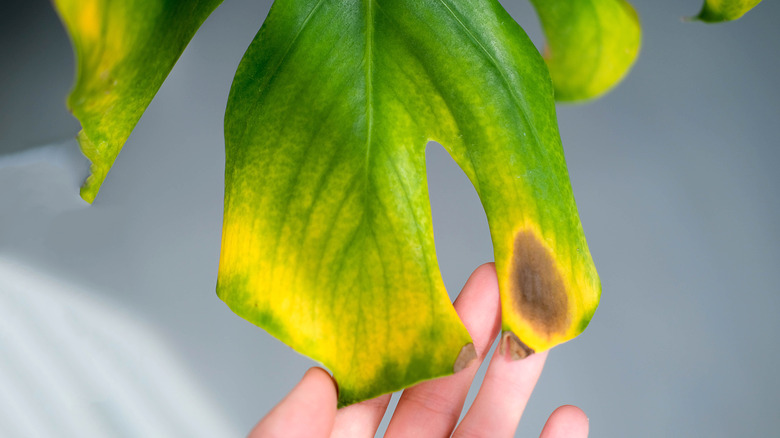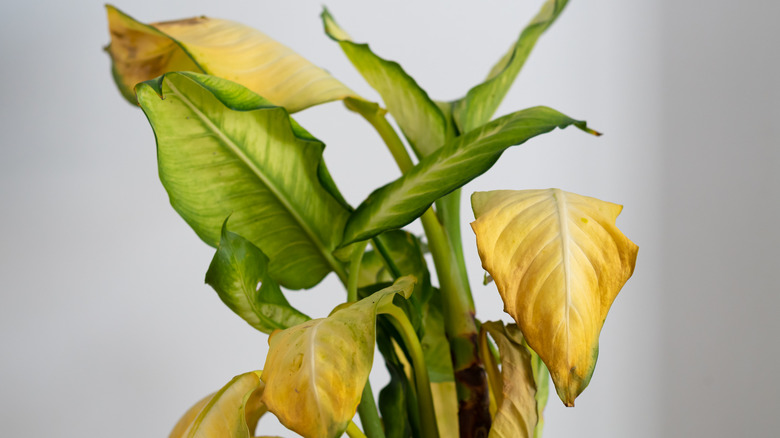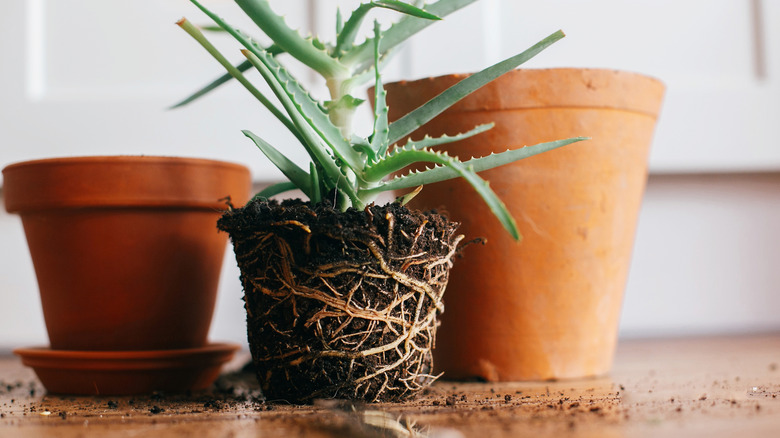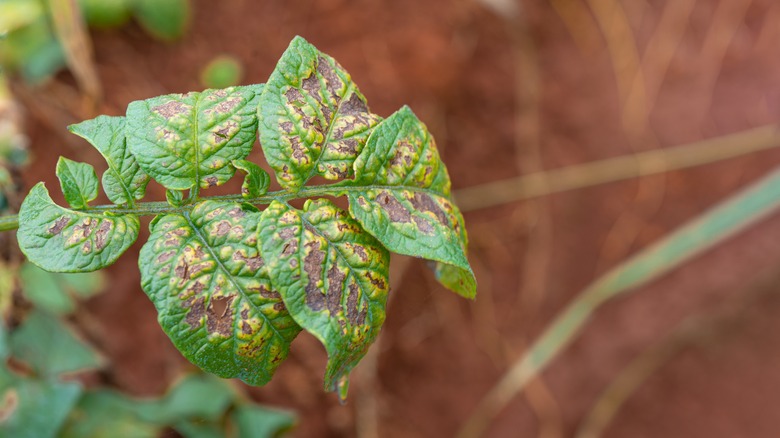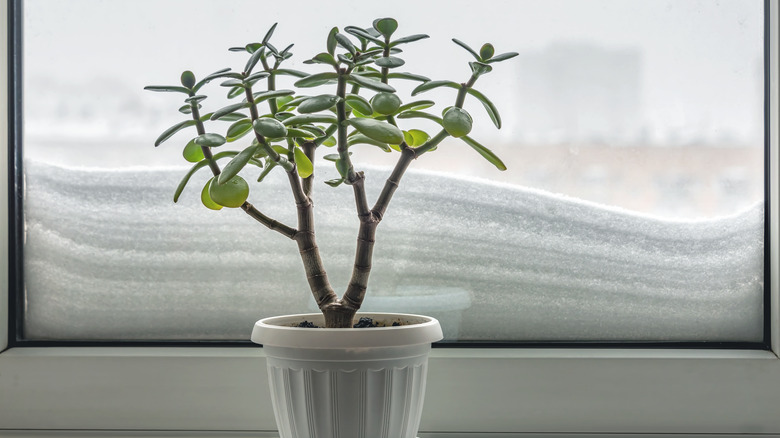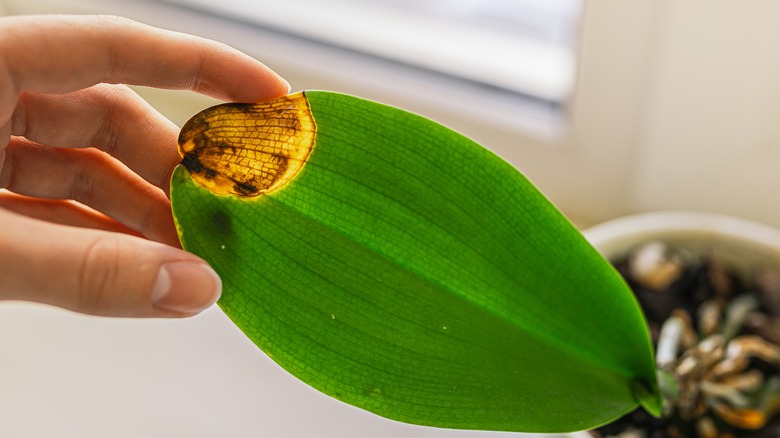What It Really Means When Your Plant Leaves Start Turning Yellow
Whether you have an indoor or outdoor garden, having a few plants that you tend to and care for is a great hobby. In fact, having a garden has many benefits for your health – both mental and physical. However, no matter the size of your garden or whether it is full of plants that are beginner-friendly and fuss-free or those of the difficult-but-beautiful variety, it can be equally frustrating when you start noticing that the leaves of your plant babies have started turning yellow.
But, before you panic, it's important to know that if only the older leaves of your plant are turning yellow, it's no cause for concern. As plants grow and age, mature leaves often die and naturally fall from the plant to make space for new growth. So, if the rest of your plant looks green and healthy, you are likely in the clear. However, if you are noticing new leaves turning yellow or if the yellowing occurs on more than one plant, then you likely have a more serious problem on your hands. Unfortunately, there are quite a few reasons why your plant may turn yellow and all of them indicate a stressed plant that needs a little extra time and care.
Too much or too little water
Over or underwatering your plants is the most common cause of yellow leaves. You can often tell that plants are being underwatered if the leaves are turning yellow and are either curling or drooping. If this is happening and the soil around the plant is dry to the touch, then your plant probably just needs more water. Most plants should be watered whenever the top few inches of the soil is dry (you can test this by sticking your finger into the soil). To get thriving plants you should always make sure to water thoroughly or until the entire pot or area surrounding the plant is soaked.
If you often water your plants when the soil is still wet, then you are very likely overwatering. Overwatering plants is a common mistake that many new gardeners make, and it can just as easily harm a plant as giving it too little water can. If the roots of a plant are not allowed to dry out, they may rot and the plant could even develop a fungal disease. Even if this doesn't happen, overwatering will prevent the plant from getting enough oxygen which prevents important nutrients from reaching the leaves, turning them yellow.
The roots don't have enough space
If you notice that the bottom leaves of your plant have turned yellow and you know you are giving it the right amount of water, it's time to start looking at the container. Yellowing leaves may be a sign that the roots don't have enough space and are becoming compacted. This is especially common if your yellowing plant is in a pot and has experienced a recent growth spurt. More signs that you need to repot your plant include roots poking up through the top of the soil or out of the drainage holes of the pot.
If you aren't completely sure that the roots of the plant are compacted, you can check by removing the plant from the container. If you remove the plant and find a massive ball of tangled roots with not much soil to speak of, your plant has outgrown its container, and moving it to a larger space with new potting soil will likely fix your yellow leaf problem.
While compacted roots are more common in potted plants, it can also happen with outdoor plants if your soil is naturally compacted. To solve this problem, you will need to aerate your soil by adding more organic matter or treating it with garden gypsum.
The plant isn't getting enough nutrients
If your plant's leaves are turning yellow in patches and the plant is generally not growing well, this could be a sign that your plant has a nutrient deficiency. Nutrient deficiencies in plants are typically caused by poor soil that is lacking in minerals. This can especially happen in potted plants if the soil is old and has hosted various plants over the years. According to the University of Maryland, the most common mineral deficiency in houseplants is iron, the symptoms of which are yellow leaves with green veins throughout. If this sounds like what is wrong with your plant, you can try adding an iron-rich fertilizer and see if that corrects the problem. However, if you are unsure what mineral your plant is deficient in, a good solution is to just repot it with fresh soil. This works because potting soil contains all the necessary nutrients for healthy plant growth.
If your outdoor plants are showing signs of nutrient deficiencies, you may need to have your soil tested and then amend it with the right fertilizer to correct the issue. You can also try to prevent nutrient deficiencies by regularly adding organic materials and compost to your garden and by applying a starter fertilizer to your young plants every year.
A sudden heat wave or cold snap
If your whole plant is turning a light whitish yellow and some leaves have brown edges, the cause could be the temperature. This happens because any sudden change in weather from warm to cold or cool to hot can cause stress for your plants.
Heatwaves usually take place over prolonged periods and typically cause dehydration (and even leaf sunburn). You can protect your outdoor and indoor plants from heatwaves by watering them deeply and often while also misting the leaves regularly to keep them from drying out and burning. If you have potted plants, it's a good idea to relocate them to cooler shaded areas.
While we often hear about the dangers of heatwaves and droughts more in the news, a sudden cold snap can be just as dangerous to your plants as a prolonged heatwave. The best way to protect your plants from a cold snap is to get ahead of the weather and bring them inside or cover them before the cool air hits. While it is possible to rescue plants from unexpected snow or frost, many tender vegetables and tropical house plants are unable to survive such low temperatures. The best thing to do for cold-damaged plants is to avoid trimming off dead or yellow leaves and continue to water them normally until they are healthy again.
Your plant is under attack
Another reason your plant may be turning yellow is if it is under attack from pests or disease. To prevent pests and diseases from spreading, you will want to separate the affected plants from the healthy ones. Then, treat the affected plant if possible. However, you may need to get rid of the plant if it is likely to become a risk to the rest of your garden.
Normally, if your plants are suffering from pests, upon closer inspection, you will be able to see the culprits as well as the damage they've done. Many houseplant pests can be treated by rinsing the leaves of your plant in the shower and then spraying with neem oil. However, pest problems on outdoor plants often need to be solved differently depending on the type of pest. For example, while stink bugs can be repelled by peppermint essential oil, Japanese beetles need to be hand-picked off plants and then dropped in a bucket of soapy water.
Fungal infections like early blight, Septoria leaf spot, and powdery mildew are easier to treat the earlier they are caught. The best way to stop these infections is with fungicides. However, you can also opt to use baking soda as a more organic and environmentally friendly option.
